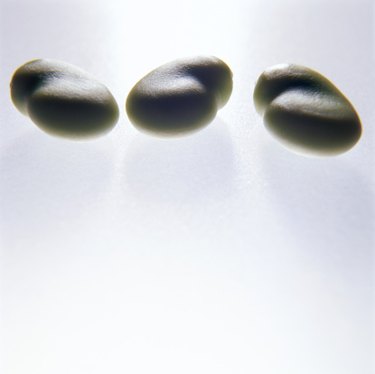Things You'll Need
Soybeans
Colander
Large bowl
Sauce pan
Airtight jars
Brine solution (18-22% salt water)
Rice bran shallow bamboo basket (bistay)
Wheat flour
Large spoon
Aspergillus oryzae (koji)
Teaspoon
Metric weight scale
Metric measuring cup

Fermented black bleans are known as douchi in China, taosi in the Philippines, and taucho in Indonesia. But technically, they aren't black beans at all. They're actually soybeans, but the fermentation process turns them black, rendering them almost unrecognizable from their original form. In all countries, the beans are boiled, dried in a basket (bistay in the Philippines), left to mold and then stored in brine. The most common mold is a variety called Aspergillus oryzae. Sake brewers also use this mold, called koji, and it is an ingredient in miso and soy sauce.
Fermented Black Beans
Step 1
Wash soybeans in a colander several times with water. Transfer your soybeans to a large bowl. Fill with water to cover, then soak overnight. Drain your beans.
Video of the Day
Step 2
Boil your beans in a saucepan with enough water to cover the beans until they're tender.
Step 3
Transfer your beans to your bistay, or shallow basket. Dry your beans in the sun for 30 minutes or in the shade for one hour.
Step 4
Bring your beans inside. Sprinkle wheat flour onto the beans with a spoon or your fingers, and shake the bistay to coat the beans. Use just enough flour to lightly coat the beans.
Step 5
Add one teaspoon of Aspergillus oryzae for every three kilograms of beans, using your metric scale to measure. Mix thoroughly with a spoon and spread the beans in your basket so they make a one- to two-inch-thick layer. You may need to perform this step in batches, depending on how many beans you prepare.
Step 6
Cover your beans with a sheet of cheesecloth and let stand three to four days, until the beans are covered in mold.
Step 7
Transfer your molded beans to airtight jars and add your 18 to 22 percent brine solution. Use two liters of brine solution for every kilogram of molded beans. Divide your bean/brine mixture between your jars, cover and store in a dry place.
Warning
This dish calls for active mold spores and fermentation techniques.
Video of the Day